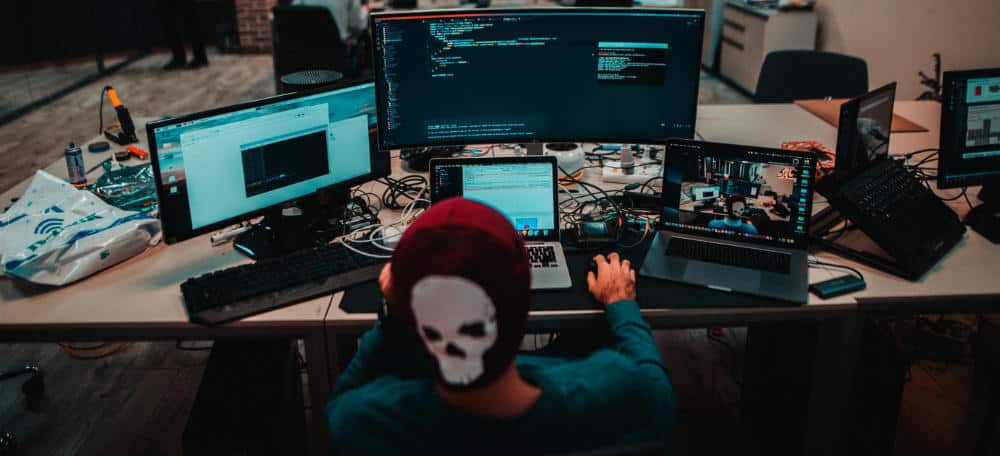
Estimated reading time: 5 minutes
In the previous article we have seen the most common use cases of a SOCaaS , explaining how it can be useful for companies to use this tool to prevent cyber attacks and also explaining which are the most common Threat Models .
In this article, however, we will take a closer look at some of the more common indicators of compromise (IOC). First we will briefly look at the malware threat models that the use of a SOCaaS can prevent and block. As it works, a SOCaaS can be very flexible and analyze a lot of data at the same time, thus providing in-depth and accurate results.
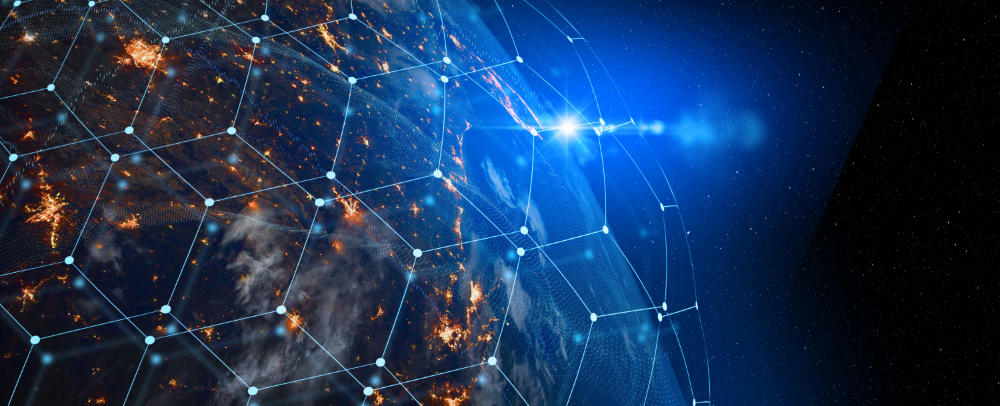
Malware Threat Models
It is important to know how to distinguish and classify the different types of malware to understand how they can infect systems and devices, the level of threat they represent and how to protect against them. We at SOD recommend adopting the use of a SOCaaS in order to be able to classify the entire range of malware or potentially unwanted objects. Malware is categorized based on the activity they perform on infected systems.
Wannacry Malware Detection
Thanks to this threat model it is possible to detect the behavior of the well-known malware Wannacry.
Wannacry malware is a ransomware that attacks the system by encrypting files of particular importance to an organization in order to make them illegible.
Early detection of ransomware is probably the most effective action you can take to defend yourself. There are also services that are able to block the action of the malware and restore any files already encrypted with those of a backup, for example Acronis Cyber Protect Cloud .
Network anomaly followed by data infiltration
Identifies successful network data aggregation attempts, followed by signs of data infiltration. Below we see some of the anomalies and how the use of a SOCaaS can identify important clues to counter threats.
During a network scan you may notice enumerations of AD accounts and privileges, count of LDAP services outside the corporate network and a suspicious number of ticket requests to Kerberos protocol . In addition, other indicators can be a spike in LDAP traffic and the enumeration of SMB services.
As regards the anomalies of the network drive , the use of a SOCaaS is able to control access to the sharepoint in order to identify an unusual number of accesses to shared elements. This also in relation to users and their level of access.
In terms of Data Aggregation and data infiltration, the quantity of bytes downloaded from the server ports and via FTP protocols are monitored, as well as an unusual quantity of bytes transmitted to the external.
Petrwrap / Goldeneye / Amalware detection
This threat model aims to detect malware Petrwrap . The use of a SOCaaS can detect network scanning activity by monitoring the number of SMBv1 activities, as well as anomalies in these activities. Attempting to reach a never-before-reached host may also be an indicator.
Another way in which these threats can be detected with the use of SOCaaS is by auditing of suspicious privileged activity. For example, it is verified that there is no escaletion of privileges, unusual access to an admin zone or even tampering with log files.
Risk indicators in general
Risk indicators are metrics used to show that the organization is subject to or has a high probability of being subject to a risk.
These indicators are used to classify the type of behavior or threat for a policy and can be used in multiple policies for different functionality based on the data source. Risk indicators can be chained with threat models to identify sophisticated attacks across multiple data sources.
In essence, these are clues or alarm bells that indicate events that a company’s security operators should pay particular attention to. The use of a SOCaaS can help identify these clues by analyzing large amounts of data and logs in a short time.
Below is a non-exhaustive list of some of the most common threat indicators that are identifiable through the use of a SOCaaS. We will divide them into different areas, for clarity.
As for accounts, obviously, blocking an account is an alarm bell, as well as an unusual number of accounts created or a disproportionate number of failed authentication. Finally, the use of a SOCaaS could indicate an IOC as a suspicious number of accounts running concurrently .
Access
The anomalies concerning the access or in any case the account include the detection of access to the anomalous administrative sherepoint but also the loading times of the anomalous applications. Applications that use an unusual amount of memory may also be indicators of compromise.
As for accounts, obviously, blocking an account is an alarm bell, as well as an unusual number of accounts created or a disproportionate number of failed authentication. Finally, the use of a SOCaaS could indicate an IOC as a suspicious number of accounts running concurrently .

Networks
Network alarm bells are, of course, the most common. Since networks are like “roads” of a corporate infrastructure, it is normal that anomalous behaviors in these are particularly relevant.
Common indicators are abnormal DNS zone transfers or failed requests to the firewall. But also an abnormal number of running hosts or ICMP connections. Traffic in general is also controlled through the use of SOCaaS, so that any suspicious data movement is analyzed or otherwise verified. Examples of this are packet movements to critical ports, RDP, SSH, or connection attempts to a DHCP server. These events often indicate abnormal attempts to connect to objects or network shares.
Through the use of a SOCaaS it is also very simple to control the behavior of the accounts that often show alarm bells in themselves . For example, an account logging into a host for the first time, creating an account, or adding privileges.
Conclusions
Relying on luck to catch threats is madness , as demonstrated by SolarWinds attack .
Create your luck with our SOCaaS solution , making sure you spot threats before incidents happen and that you are “lucky” enough to counter them.
Contact us to find out how our services can strengthen your company’s defenses, we will be happy to answer any questions.
Useful links:

Estimated reading time: 4 minutes
Today, facing an attack in a corporate SOC is very similar to being under attack without knowing which direction the blow is coming from. The threat intelligence can keep you informed of security issues. However, in many cases, this information is only provided when you are already under attack, and is rarely very useful except in retrospect. It would take a different approach to data analysis, and that’s exactly what we propose with predictive cybersecurity .
In cybersecurity, threat intelligence is still relied upon as a fundamental defensive tool. Unfortunately, threat intelligence only covers a subset of threats that have already been found, while attackers constantly innovate . This means that new malware executables, phishing domains and attack strategies are created all the time.
Threat intelligence has a strong value for reactive incident response. It helps when pivoting through an investigation, identifying intent or other useful data, and providing additional investigative assistance. But it has limited value for detection, as threat actors avoid reusing their attack infrastructure from one target to another.
If the clues you see are different from those known from previous attacks, what can you do to move forward with effective detection? A legitimate question, for which predictive cybersecurity perhaps has an answer.
… what if you could know what is going to hit?
SOCaaS: predictive cybersecurity
Eyes on opponents rather than past attacks
The SOCaaS solution offered by SOD brings predictive cybersecurity capabilities to cybersecurity. The solution maps adversaries , instead of threats, and analyzes their actions to predict the behavior and the tools used in their attacks.
The analytical engine translates behavioral patterns into profiles of adversary attack infrastructures , which indicate as ( trojan, phishing or other forms of attack ) and where ( branches, customers, partners, peers, industry and geographies ) < strong> attackers are planning to target your company .
This provides a preemptive attack map, which identifies opponents based on their attack phase and current position within the extended business landscape . But not only that, in fact, information about the opponent, typical attack patterns and possible countermeasures that can be taken in advance are also identified. This way you can cancel the threat before it materializes .
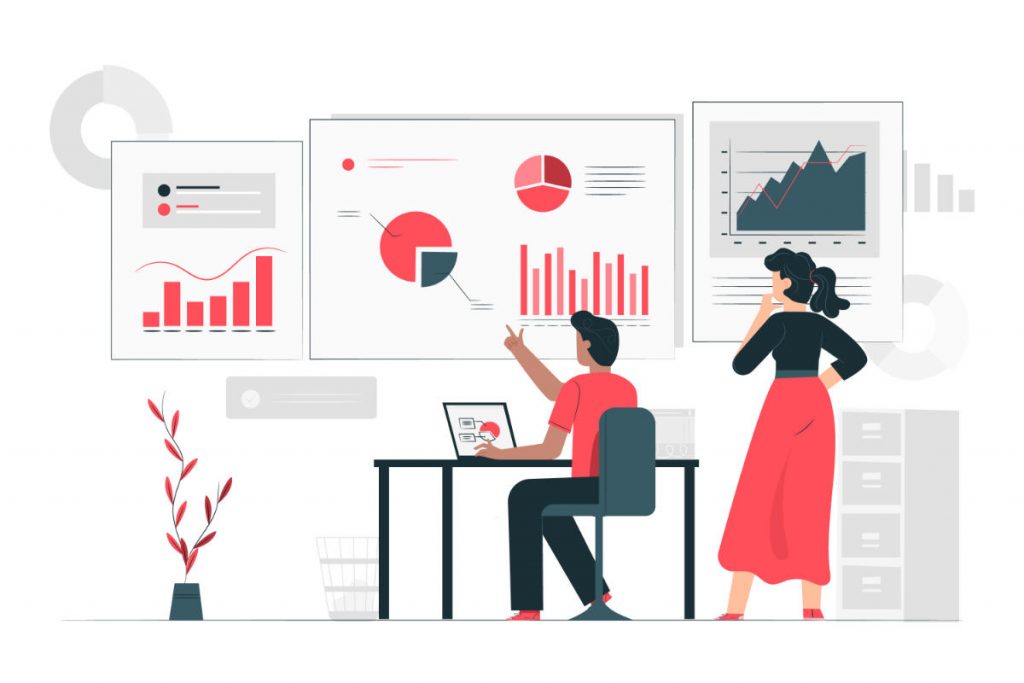
Predictive cybersecurity: understand what’s going to happen first
Our SOCaaS provides predictive detection capabilities against internal and external threats with the combination of user, entity and adversary behavior analysis. Our Next-Gen SIEM uses an analytics-driven approach to threat detection. SOC provides visibility in the crucial early stages of an attack. That is when cyber actors are targeting, planning and preparing the infrastructure for an attack.
With this level of predictive visibility, the team can prevent attacks and systematically contain those in progress. Predictive cybersecurity allows defenders to tune their systems against the attack infrastructure. In fact, it is possible to build blacklists that include the IP addresses and the host names of the instances used for the attack . Other measures include fortifying corporate systems against the specific malware that is used to target them, rendering the attack powerless when it occurs.
Opponent Behavior Analysis extends the capabilities of Next-Gen SIEM by continuously providing updated analysis of opponent information and behavior . This encompasses the entire attack infrastructure for dynamic and proactive threat protection.
SOCaaS automatically translates the pre-attack behavior of opponents into actions or countermeasures that can be taken against phishing, compromise of corporate email, ransomware, fraud and many other common threats.
Common use-cases
Threat-chaining
Correlate breaches from the same adversary / campaign into a cohesive threat, even if different pieces of attack infrastructure are used for each event.
Prevention and preventive defense
Preemptively blocking an opponent’s entire attack infrastructure, such as newly created phishing domains, for preemptive defense.
Strengthen vulnerable resources
Focus and secure the most vulnerable parts of your infrastructure based on information that identifies which areas are possible targets.

The information provided by SOCaaS is used to add more context to existing threats, as well as provide information on attacks that have not yet been implemented or are in the early stages, such as reconnaissance. This allows for direct action against evolving threats and a more robust defense.
Conclusions
Relying on luck to catch threats is madness, as the recent SolarWinds attack . Make your fortune with SOD’s SOCaaS solution, making sure you see threats before they happen and are “lucky” enough to counter them.
Useful links:

Estimated reading time: 8 minutes
The term shoulder surfing might conjure up images of a little surfer on his shirt collar, but the reality is much more mundane. shoulder surfing is a criminal practice in which thieves steal your personal data by spying on you while using a laptop, ATM, public terminal or other electronic device among other people . This social engineering technique is a security risk that can cause disaster, especially if the stolen credentials are corporate.
The practice long predates smartphones and laptops and dates back to when criminals spied on pay phone users as they entered their calling card numbers to make calls . Many years have passed, but the technique has not been lost. Thieves have evolved to observe their victims typing their ATM PINs, paying at self-service petrol pumps, or even making a purchase in a store.
A similar technique for ATM theft involves a card cloning device superimposed on the card insertion hole and a micro camera to spy on the code. The micro camera performs an act of shoulder surfing . Card cloning is essential because without a physical device the pin is useless, but in the case of account credentials on the network, all you need is user and password.
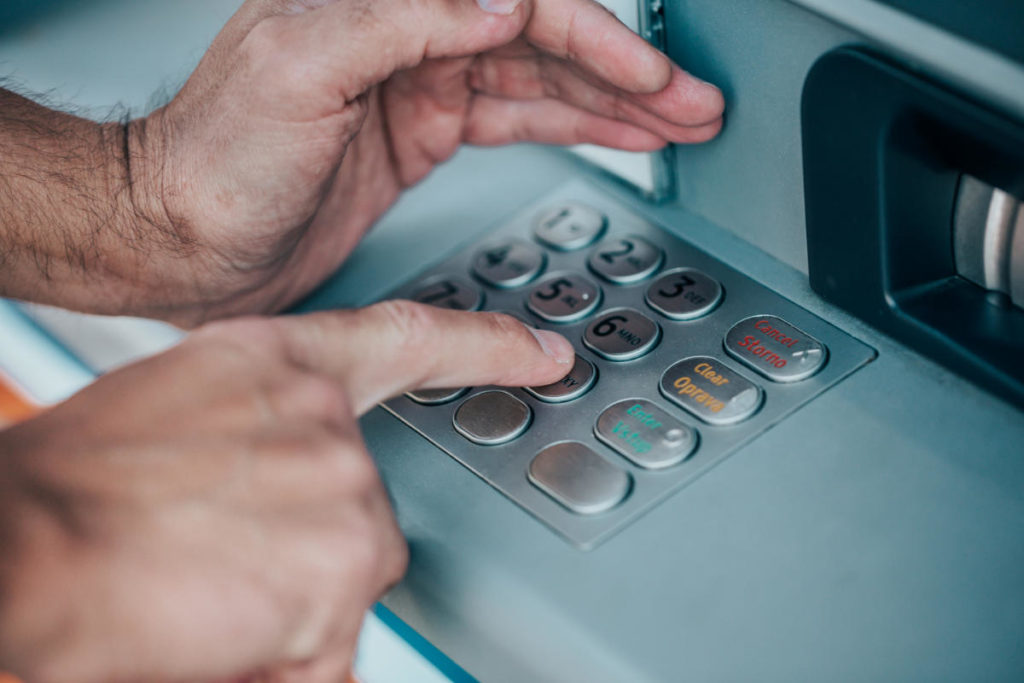
When does Shoulder Surfing take place?
shoulder surfing can happen whenever you share personal information in a public place. This includes not only ATMs, coffee shops and POS devices in general, but virtually any place where you use a laptop, tablet or smartphone to enter personal data.
Long-time shoulder surfers did not usually loom behind their victims to scrutinize information. Instead, they stood at a safe distance and interpreted finger movements as people typed numbers on the keyboard . Similarly, today’s social engineers often escape attention as they quietly observe others in public places such as airport lounges and shopping malls, bars and restaurants, on trains or subways, or wherever there are people, to tell the truth.
Indeed, today’s most sophisticated criminals are watching from further away, hidden from view. They could use binoculars, micro cameras, or the camera of their phone or tablet to scan your screen or keyboard. Not only that, they may eavesdrop as you read credit card numbers on the phone or provide other sensitive information. Criminals could also take pictures, make a video or audio record of the information and then interpret it later.
Whatever the methodology, it is clear that technology has not only helped us to be more connected and be able to afford to pay for a frappuccino with our mobile phone, but it has also exposed us to security risks. When it comes to sensitive data, especially if there is a corporate account involved that could access other people’s sensitive data, you should never let your guard down , consequences could be very serious .
As shoulder surfing commonly happens
Before suggesting some methods to prevent shoulder surfing to be put into practice immediately, let’s take a closer look at how credential theft could happen with this technique.
At the bar or in the cafeteria
You’re in a busy restaurant bar waiting for a friend. To pass the time, you connect to Instagram. Unfortunately, you don’t notice that the person stuck in line next to you is looking at your password, which happens to be the same one you use for your email and bank account.
At the ATM
You’re taking cash at an ATM. You feel safe because the man after you in line is at least 10 feet away and is even looking at his phone. In fact, he is recording your finger movements on his phone and will later decrypt them to get your PIN number.
To the airport
Your flight is delayed, so grab your laptop and kill your time by reading a couple of work emails to keep up to date. Log in to the company website to read your mail and enter your username and password. You are so calm that you don’t see the woman a few places away as she stares at the screen while you enter data.

What are the consequences of shoulder surfing?
Using your credit card information to make fraudulent purchases is just one example of the damage you could suffer if you fall victim to shoulder surfing . The more personal information a criminal captures about you, the more serious the consequences can be for your bank account and financial health.
A serious case of shoulder surfing can expose you to identity theft . A criminal could use your personal information, such as your social security number, to open new bank accounts, apply for loans, rent apartments, or apply for a job under your name. An identity thief could get their hands on your tax refund, use your name to get medical treatment, or even apply for government benefits in your name. They could also commit a crime and provide your personal information when questioned by the police, leaving you with a dirty record or arrest warrant.
Of course, if you suspect this has happened, you’ll need to go to the police immediately, block your checking accounts and notify the bank. If fraudulent actions have already been carried out in your name, you may need to prove that you are not involved.
Things get dangerous if the stolen data is from a corporate account. In fact, with the use of valid credentials, anyone could enter the company’s system and perform all kinds of actions, such as collecting additional data, placing malware, running a ransomware , steal customer data and then sell it online.
How to defend yourself from shoulder surfing
Two levels of protection can be identified, the first is proactive and is aimed at preventing credentials from being exposed to malicious people, the second is active and provides software to detect attempts to use stolen credentials.

Defend yourself proactively
If you really can’t avoid entering sensitive data on your laptop, tablet or smartphone in a public place, you should follow the countermeasures listed below.
Tip 1: Before entering any sensitive data, find a safe place . Make sure you sit with your back to the wall. This is the best way to protect yourself from prying eyes. Avoid public transport, the central armchairs of a waiting room and places where there is a lot of people coming and going.
Tip 2: Use a privacy filter. This hardware device is a simple polarized translucent sheet that is placed over the screen. It will make your screen look black to anyone looking at it from any unnatural angle . This will make it much more difficult for unauthorized people to see your information.
Tip 3: Two-factor authentication requires a user to prove their identity using two different authentication components that are independent of each other. Since this type of authentication only passes when both factors are used correctly in combination, the security measure is particularly effective. For example, this method is often used a lot in online banking. There are many services that allow you to use your mobile phone as a second authentication factor . This is done through special apps.
Tip 4: Another solution is to use a password manager . By doing so, you no longer have to enter each password individually on your computer. The password manager will do this for you after you enter your master password . This prevents unauthorized people from using your keyboard to determine the real password, provided that you properly protect your master password .
Actively defend yourself with a SOC and behavior analysis
Now let’s imagine that the corporate account credentials have been stolen. At this point only a behavior control system can trigger an alarm and therefore block the user before there is any damage.
In fact, using correct credentials, a normal traditional SIEM would not trigger any alarms. For an older generation SIEM, access would be legitimate, because the credentials are correct. The attacker would have free undisturbed access to the system and could continue with his attack plan.
With SOD’s SOCaaS service, however, abnormal access would trigger an alarm. The SOC provided is equipped with a Next Generation SIEM and a system UEBA control behavior . This means that any deviation from the user’s usual behavior would be reported.
In the case of credential theft, as happens with shoulder surfing, the access made by the attacker would therefore trigger an alarm because something is wrong . For example, the login could take place at anomalous times, in another country / IP, from a different operating system, etc.
Conclusions
shoulder surfing is a social engineering technique that focuses on user carelessness while entering sensitive data into a system. In the event that a user’s corporate credentials are stolen, the only really efficient thing is to have a system that analyzes user behavior and reports whenever suspicious actions are detected.
If you want to know in detail how a SOC and UEBA system can help your company defend against social engineering attacks, do not hesitate to contact us, we will be happy to answer any questions.
Useful links:

Estimated reading time: 6 minutes
Una logic bomb, chiamata anche slug code, è un pezzo di codice inserito in un’applicazione, virus o malware che implementa una funzione dannosa dopo un certo limite di tempo o in condizioni specifiche.
Queste “bombe” sono spesso usate tramite virus, worm e Trojan per gestire al meglio il tempo a disposizione e fare il massimo danno prima di essere notati. Eseguono azioni come corrompere o alterare i dati, riformattare un disco rigido e cancellare file importanti.
In questo articolo voglio spiegare cosa sia un bomba logica e offrire qualche suggerimento per prevenirne i danni.
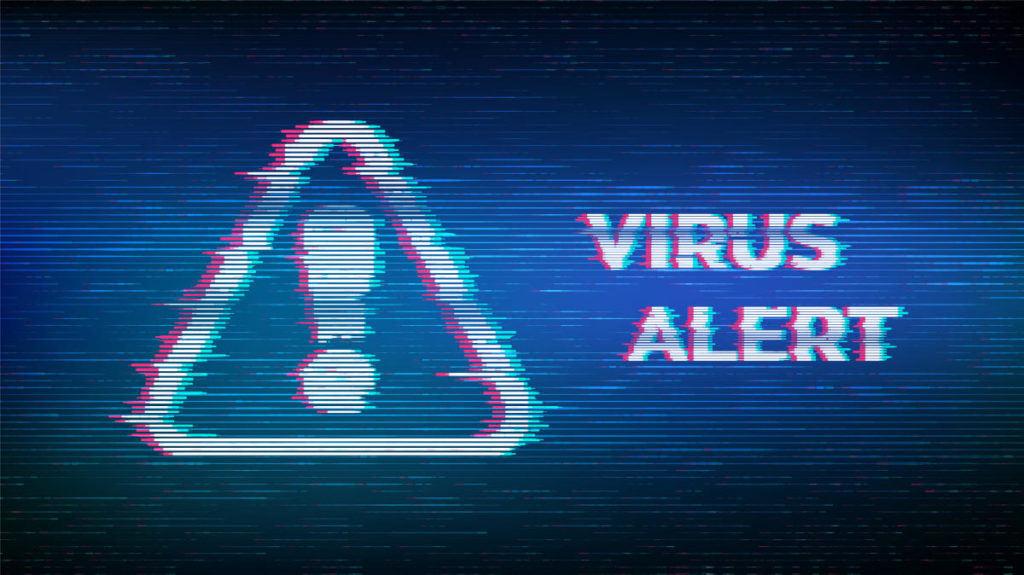
Cos’è un logic bomb virus?
Una bomba logica è spesso inserita in un virus o comunque in un file eseguibile. È composta da un codice malevolo che innesca un attacco quando vengono soddisfatte condizioni specifiche. Le condizioni possono essere positive (qualcosa che accade) oppure negative (qualcosa che non accade). Nel primo caso un esempio è quello dell’apertura di un programma, invece, un esempio di condizione negativa è un utente che non compie il login.
Le bombe logiche sono spesso installate da qualcuno con un accesso di alto livello, come un amministratore di sistema. Tale persona può causare il caos impostando questi codici su più sistemi e programmandoli per “esplodere” simultaneamente quando si verifica un certo evento. Per esempio, potrebbero azionarsi quando un certo dipendente viene rimosso dal database degli stipendiati, cioè quando viene licenziato.
Con il termine slag code ci si riferisce al codice manipolato che rende dannoso un programma altrimenti sicuro. Le versioni a tempo di bomba logica sono quelle più diffuse e utilizzano come condizione positiva il trascorrere di un certo lasso di tempo.
Qualunque sia il nome usato, il metodo di attacco è sempre chiaramente lo stesso: il codice rimane dormiente nel software infetto fino a quando non viene innescato. Gli attacchi comuni coinvolgono la corruzione dei dati, la cancellazione dei file e la cancellazione dei dischi rigidi.
Come funziona
Il modo in cui una logic bomb funziona dipende da chi l’ha ideata. Ogni bomba logica è unica, ed è per questo che sono difficili da tracciare. Di solito sono personalizzate per essere il meno rilevabili possibile. Spesso sono travestite per sembrare un tipico virus informatico o inserite in altri tipi di malware come i worm. Worm e virus sono diversi, ma le bombe logiche non si preoccupano della distinzione: possono causare danni attraverso entrambi.
Una bomba logica è effettivamente un malware? Poiché fanno parte di altri programmi, no, ma di solito hanno un intento maligno. Ecco perché gli slag code sono così difficili da rilevare. Inoltre, essendo “solo” codice, potenzialmente inseribile ovunque, mitigare il rischio è più complicato.
La cosa migliore da fare, come utente finale che potrebbe essere coinvolto in un attacco con una logic bomb, è quello di tenere gli occhi aperti e chiedere agli esperti IT della tua azienda di fare i controlli necessari in caso di dubbio. Il rischio è quello di far scattare la bomba involontariamente cercando di trovarla.
Esempi di attacchi
Le bombe logiche possono cambiare in modo impercettibile un frammento di codice in modo che appaia tecnicamente normale ad un sistema automatico di ricerca delle minacce, mentre sembrerebbe molto sospetto per un occhio umano. Nel 2016, un programmatore freelance ha volontariamente causato un malfunzionamento ricorrente dei fogli di calcolo in una filiale della società Siemens. La filiale lo ha continuato ad assumere per risolvere il problema che lui stesso aveva causato (Fonte). In questo caso, i dipendenti non sospettavano nulla fino a quando una fortunata coincidenza ha costretto il codice maligno a uscire allo scoperto.
Anche le aziende possono usare bombe logiche per violare i propri clienti. Nel 2005, Sony fu coinvolta in uno scandalo per aver rilasciato dei CD che scatenavano una bomba logica quando venivano inseriti in un computer. Lo slag code contenuti nei CD installava un rootkit che bloccava la capacità del PC di copiare i CD. (Fonte)
Un altro caso di alto profilo si è verificato nei primi anni 2000, quando un dipendente di UBS Global, arrabbiato per una disputa salariale, ha piazzato una bomba logica a tempo che ha causato più di tre milioni di dollari di danni. Un segno evidente che uno snippet di codice molto piccolo può causare una grande quantità di danni. (Fonte)
Nel 2013, un attacco con una bomba a tempo in Corea del Sud ha cancellato i dischi rigidi di diverse banche e società di trasmissione. Il gruppo responsabile dell’attacco ha messo la bomba a tempo all’interno di un malware che ha finito per infettare oltre 32.000 sistemi. Le bombe sono esplose tutte insieme, causando il caos in tutto il paese. (Fonte)

Da dove vengono e come prevenire le logic bomb
Come abbiamo visto anche negli esempi, le bombe logiche sono tipicamente distribuite all’interno di una rete chiusa, come quella di un’azienda o di una filiale. Una delle probabili fonti è un dipendente scontento con accessi di amministratore, quindi un attento monitoraggio delle attività in uscita del personale dovrebbe rivelare qualsiasi attività sospetta. Ma non è tutto, le bombe logiche possono anche essere piazzate in allegati di email e download di file sospetti, quindi gli utenti dovrebbero essere vigili quando scelgono i file da scaricare.
Come abbiamo visto quando abbiamo parlato di phishing e di ingegneria sociale, la parte più hackerabile di un sistema, sono spesso gli user. Per questo una campagna preventiva è sempre un’ottima scelta. Prendersi cura del personale significa anche proporre dei training specifici tramite servizi di phishing etico.
Oltre alla prevenzione, è bene limitare i privilegi amministrativi a un gruppo selezionato di dipendenti in modo che sia meno probabile che qualcuno possa causare gravi danni alla rete con una bomba logica. Questo metodo preventivo, inoltre, riduce il numero dei sospetti in caso di attacco, rendendo l’appartenenza a quello specifico gruppo di dipendenti di per sé un deterrente contro gli attacchi interni.
La soluzione proposta da SOD
Dove la prevenzione fallisce e vincono invece gli hacker, è il campo ideale per implementare sistemi avanzati di monitoring e analisi.
SOD offre, per esempio, un sistema SIEM nella soluzione SOC as a Service. Tramite il SIEM vengono costantemente raccolte informazioni su quello che succede nella rete. Queste informazioni vengono poi arricchite con metadati contestuali per uniformarle e gestirle al meglio. Già questo è in grado di far scattare allarmi se alcuni eventi sospetti si verificassero. Ma se questo non bastasse, il SOC dispone anche di uno strumento di “User and Entity Behavior Analysis” (UEBA) che analizza il comportamento degli utenti e grazie all’interazione di una IA riesce a individuare comportamenti sospetti.
Se vuoi saperne di più riguardo al servizio SOC offerto, o se hai delle domande su come SOD può aiutarti a mantenere la tua azienda al sicuro, non esitare a contattarci. Saremo lieti di rispondere a ogni dubbio.
Useful links:
Mobile App Penetration Test & Code Review
Cos’è la Cyber Security? Definizione e proposte
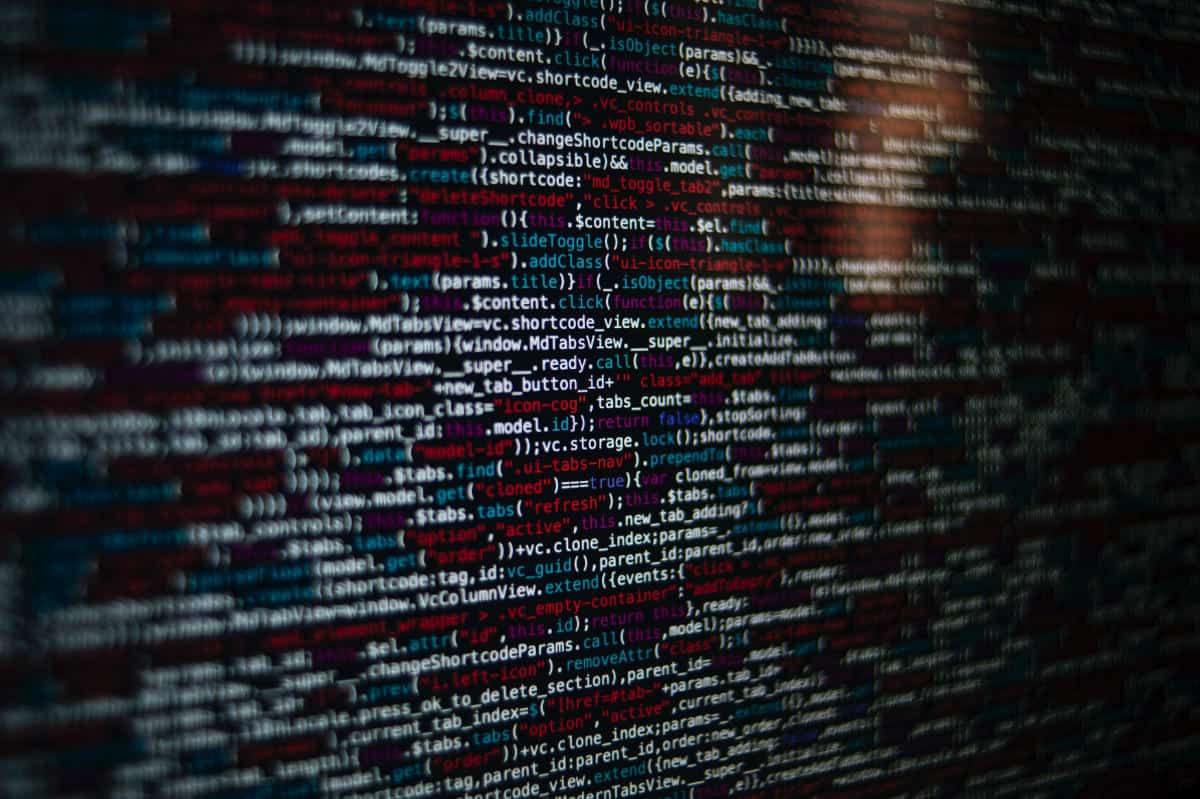

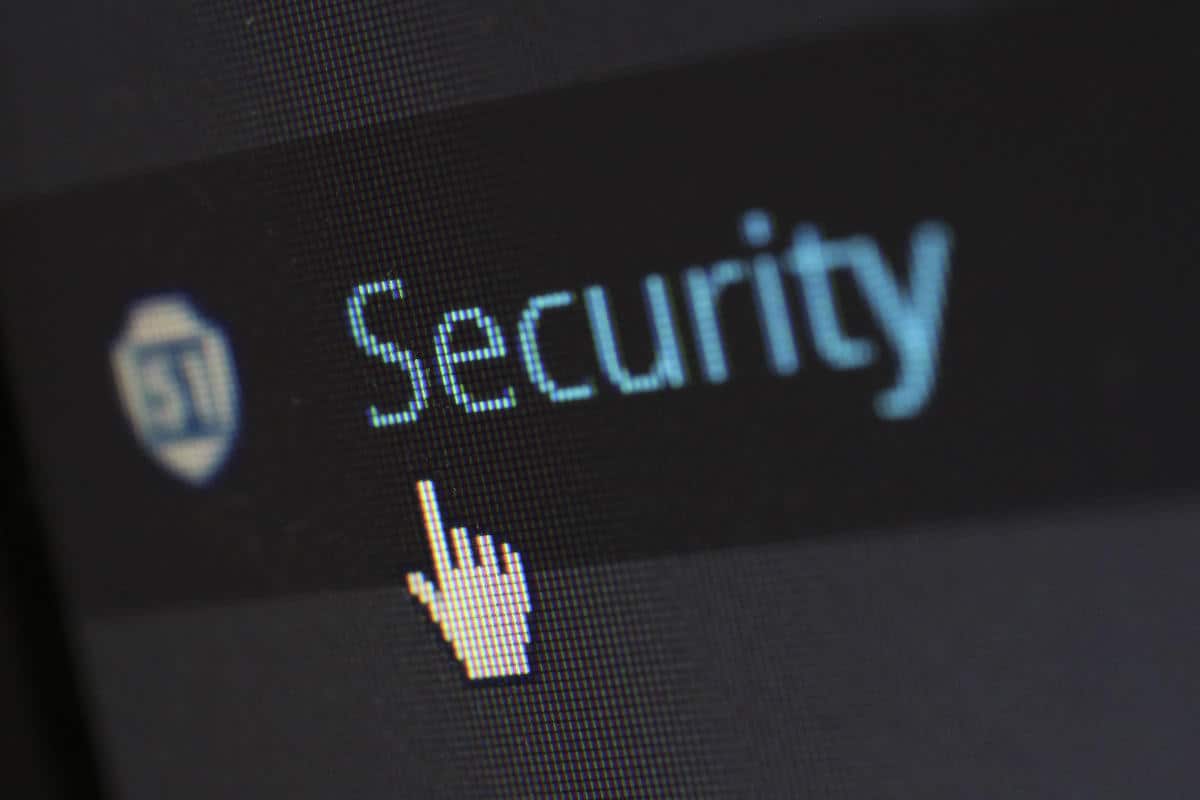

A SIEM solution in IT is one of the essential components of a SOC (Security Operation Center). Its task is to collect information and analyze it in search of anomalies and possible breaches in the system. But the defense process hasn’t always been that simple. What we now call SIEM, Security Information and Event Management, is the union of two different types of cyber security tools.
SIM and SEM: the origins
Before the arrival of a complete SIEM solution in computing, security was heavily focused on perimeter security and did not keep the internal network adequately controlled. The first solutions developed in the 90s were basic and basically dealt with security information management (SIM) or security event management (SEM). They were solutions available as tools that had to be deployed on-site in the data center to be protected. This limited scalability, because adding capacity required the purchase of additional equipment.
These early solutions were also built on proprietary databases that forced customers to use technology from a single vendor. If you wanted to move your data to another system, the process was long and complicated. It should also be noted that archiving was more expensive, so only the most valuable data was collected. Furthermore, although the SIM and SEM solutions contained all the data necessary for the defense, the search and alarm were rudimentary. Additionally, they depended on experienced security analysts to research, understand and interpret what they found in the data.
SIEM origins in computer science
As data became more sensitive and technology more powerful, SIEM systems (SIM + SEM) became capable of ingesting, processing and storing a great deal of data. Next-generation SIEM IT solutions are able to use signature-based alerts to identify threats in collected data. However, only those alerts that have identified indicators of compromise (IOC) of a certain threat can be identified in this way.
To be clear, if the type of attack to which a system is subjected has not been cataloged in a series of IOCs, a first generation SIEM is not able to detect it. The main drawback of those systems was the very limited ability to detect unknown cyber threats.
To give a practical example: it was possible to use a rule like this: “give a warning if a user enters 10 consecutive wrong passwords“. In theory this could be used to detect brute force password attacks. But what if the attacker only tried 9 passwords in a row? Or what if the alarm was given for a very forgetful user?
Next Gen SIEM (NGS)
A next generation SIEM is built on a large data platform that provides unlimited scalability and is hosted in the cloud. A next gen SIEM includes log management, advanced threat detection based on behavior analysis and automatic incident response, all on a single platform.
This eliminates the problems that old on-premises systems were prone to. Not having to install anything and being able to send the necessary data to the cloud quite simply, the computing power of the local machine is not compromised and the SIEM can manage all the data safely.
How a SIEM proceeds in cyber threat analysis
1. Data Collection: An IT SIEM solution collects data from across the organization using agents installed on various devices, including endpoints, servers, network equipment and other security solutions. Next generation SIEM includes support for cloud applications and infrastructure, business applications, identity data and non-technical data feeds.
2. Data enrichment: Enrichment adds further context to events. SIEM will enrich data with identity, resources, geolocation and threat information.
3. Data storage: The data will then be stored in a database so that it can be searched for during investigations. The next generation SIEM exploits open source architectures and big data architectures, exploiting their scalability.
4. Correlation and Analysis: SIEM solutions use several techniques to draw actionable conclusions from SIEM data. These techniques vary greatly.
5. Report: A SIEM, particularly a next generation SIEM, gives you the ability to quickly search for data, allowing you to dig through alerts and search for threat actors and indicators of compromise. The displayed data can be saved or exported. It is also possible to use out-of-the-box reports or create ad hoc reports as needed.
What a SIEM is used for
Threat hunting and investigation
The ability to perform threat hunting on a SIEM is critical to understanding the true patterns of attacks based on access, activity and data breaches. By developing a detailed and contextual view of attacks, security analysts can more easily develop policies, countermeasures and incident response processes to help mitigate and remove the threat.
Response in case of an accident
An effective response to incidents is essential to intervene more quickly and reduce the residence time of the threat. For this, a SIEM provides an incident response playbook with configurable automated actions. A SIEM is able to integrate with third party solutions for security orchestration (SOAR) or individual case management.
Defense against insider threats
The reason why insider threats are such a big problem is because it’s not about entering the perimeter, but about exploiting insider positions. They can be your employees, contractors or business associates. It may be they themselves wanting to exploit their location, or their account may have been hacked.
With all kinds of internal threats, the attacker tries to stay hidden, gathering sensitive data to exploit. This could cause significant damage to the company, its position in the industry and its relationship with consumers or investors. By using a SIEM, you avoid this risk.
Cyber threat detection
Your organization is likely to have at least one sensitive data repository. Cybercriminals thrive on looting this data for financial gain. Many breaches begin with a simple phishing email against an organization’s target. Simply clicking on an attachment can leave malicious code behind. A SIEM will allow you to monitor advanced cyberthreat patterns such as phishing, beaconing and lateral movement.
Compliance standards
For many industries, adherence to compliance standards is critical. A SIEM can help by providing reports focused on data compliance requests. Integrated packages covering all major mandates, including PCI DSS, SOX, and ISO 27001, are a standard feature of SIEMs as well.
Next Generation SIEM
A next generation SIEM is not just a cloud hosted system. It also makes use of the implementation of AI and Machine Learning to increase the defense of the IT system.
We will see it in a future article, but it is right to specify that the SOCaaS offered by SOD makes use of the latest generation technology offered by Next Gen. SIEM systems. Contact us to find out more about it and talk to experts who can dispel all your doubts.
[btnsx id=”2931″]
Useful links:
Security: Pentest and verification of vulnerabilities
What is a Network Lateral Movement and how to defend yourself
Is SOCaaS useful for your business?
Computer network security: PT vs. VA

Customers
Twitter FEED
Recent activity
-
SecureOnlineDesktop
Estimated reading time: 6 minutes L'impatto crescente delle minacce informatiche, su sistemi operativi privati op… https://t.co/FimxTS4o9G
-
SecureOnlineDesktop
Estimated reading time: 6 minutes The growing impact of cyber threats, on private or corporate operating systems… https://t.co/y6G6RYA9n1
-
SecureOnlineDesktop
Tempo di lettura stimato: 6 minuti Today we are talking about the CTI update of our services. Data security is… https://t.co/YAZkn7iFqa
-
SecureOnlineDesktop
Estimated reading time: 6 minutes Il tema della sicurezza delle informazioni è di grande attualità in questo peri… https://t.co/tfve5Kzr09
-
SecureOnlineDesktop
Estimated reading time: 6 minutes The issue of information security is very topical in this historical period ch… https://t.co/TP8gvdRcrF
Newsletter
{subscription_form_1}© 2023 Secure Online Desktop s.r.l. All Rights Reserved. Registered Office: via dell'Annunciata 27 – 20121 Milan (MI), Operational Office: via statuto 3 - 42121 Reggio Emilia (RE) – PEC [email protected] Tax code and VAT number 07485920966 – R.E.A. MI-1962358 Privacy Policy - ISO Certifications





